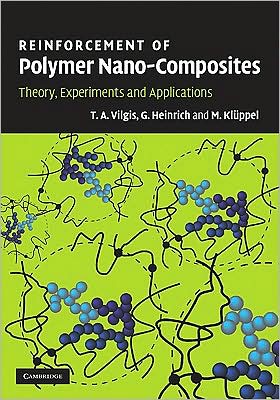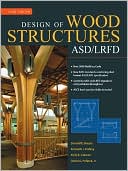Reinforcement of Polymer Nano-Composites: Theory, Experiments and Applications
Reinforced rubber allows the production of passenger car tires with improved rolling resistance and wet grip. This book provides in-depth coverage of the physics behind elastomer reinforcement, with a particular focus on the modification of polymer properties using active fillers such as carbon black and silica. The authors build a firm theoretical base through a detailed discussion of the physics of polymer chains and matrices before moving on to describe reinforcing fillers and their...
Search in google:
Reinforced rubber allows the production of passenger car tires with improved rolling resistance and wet grip. This book provides in-depth coverage of the physics behind elastomer reinforcement, with a particular focus on the modification of polymer properties using active fillers such as carbon black and silica. The authors build a firm theoretical base through a detailed discussion of the physics of polymer chains and matrices before moving on to describe reinforcing fillers and their applications in the improvement of the mechanical properties of high-performance rubber materials. Reinforcement is explored on all relevant length scales, from molecular to macroscopic, using a variety of methods ranging from statistical physics and computer simulations to experimental techniques. Presenting numerous technological applications of reinforcement in rubber such as tire tread compounds, this book is ideal for academic researchers and professionals working in polymer science.
Preface ixAcknowledgement xii1 Introduction 12 Basics about polymers 102.1 Gaussian chains - heuristic introduction 102.2 Gaussian chains - path integrals 122.3 Self-interacting chains 153 Many-chain systems: melts and screening 193.1 Some general remarks 193.2 Collective vaniables 203.3 The statistics of tagged chains 264 Rubber formation 314.1 Classical theory of gelation 314.2 Percolation 344.3 Vulcanization 375 The elastomer matrix 405.1 General remarks 405.2 The Gaussian network 425.3 Entanglements and the tube model: a material law 455.3.1 Entanglement sliding 475.3.2 Finite extensibility 495.3.3 Tube and sliplinks 525.4 Experiments 535.4.1 The stress-strain relationship 535.4.2 The extended tube model of rubber elasticity 555.4.3 Testing of the model 596 Polymers of larger connectivity: branched polymers and polymeric fractals 646.1 Preliminary remarks 646.2 D-dimensionally connected polymers in a good solvent 646.3 D-dimensionally connected polymers between two parallel plates in a good solvent 666.4 D-dimensionaIly connected polymers in a cylindrical pore (good solvent) 686.5 Melts of fractals in restricted geometries 716.6 Once more the differences 747 Reinforcing fillers 757.1 Fillers for the rubber industry 757.2 Carbon black 777.2.1 Morphology of carbon black aggregates 777.2.2 Surface roughness of carbon blacks 847.2.3 Energy distribution of carbon black surfaces 927.3 Silica 968 Hydrodynamic reinforcement of elastomers 1018.1 Reminder. Einstein-Smallwood 1018.2 Rigid filler aggregates with fractal structure 1038.2.1 Effective mediumtheory and linear elasticity 1068.2.2 Screening lengths 1098.2.3 Reinforcement by fractal aggregates 1108.3 Core-shell systems 1118.3.1 Uniform soft sphere 1128.3.2 Softcore/hardshell 1128.3.3 Hard core/soft shell 1159 Polymer-filler interactions 1189.1 General remarks and scaling 1189.1.1 Flat surface 1199.1.2 Generalization for fractal surfaces 1209.2 Variational calculation statics 1219.2.1 Variational calculation 1219.3 Trial Hamiltonian 1229.3.1 Minimization of the free energy 1239.3.2 Effective interaction strength 1269.4 Some further remarks on the interpretation 1309.4.1 Modeling by random potentials 1319.4.2 Annealed and quenched disorder 1349.4.3 Dynamics of localized chains - freezing, glass transition at filler surfaces 1359.5 Equation of motion for the time correlation function 1379.5.1 Langevin dynamics 1379.5.2 Self-consistent Hartree approximation 1399.5.3 Equation of motion 1429.6 Dynamic behavior of the chain 1449.6.1 Anomalous diffusion 1449.6.2 Center-of-mass freezing 1469.6.3 Rouse modes freezing and a two mode toy model 1479.7 Numerical analysis 1489.7.1 Bifurcation diagram 1499.8 Contribution to the modulus 15110 Filler-filler interaction 15310.1 Filler networking in elastomers 15310.1.1 Flocculation of fillers during heat treatment 15310.1.2 Kinetics of filler structures under dynamic excitation 15610.2 Dynamic small- and medium-strain modeling - the Payne effect 16110.2.1 The Kraus model 16110.2.2 The viscoelastic model 16410.2.3 The van der Walle-Tricot-Gerspacher (WTG) model 16910.2.4 The links-nodes-blobs (LNB) model 17110.2.5 The model of the variable network density 17210.2.6 The cluster-cluster aggregation (CCA) model 17410.3 Stress-softening and quasistatic stress-strain modeling - the Mullins effect 18210.3.1 The dynamic flocculation model 18210.3.2 The Kantor-Webman model of flexible chain aggregates 193References 196Index 20








